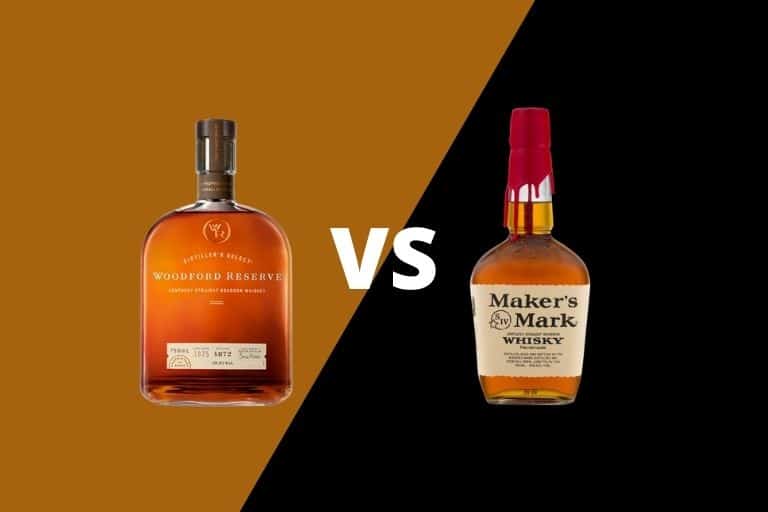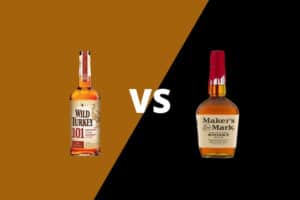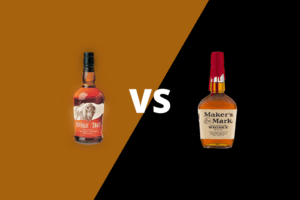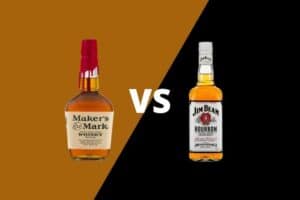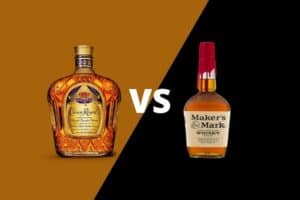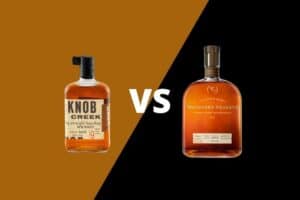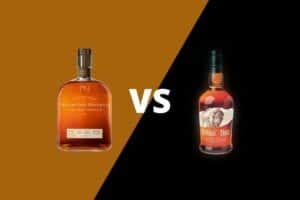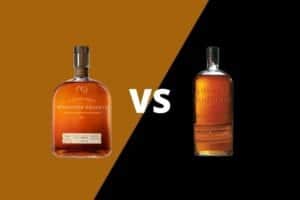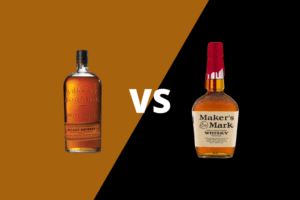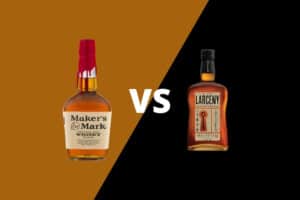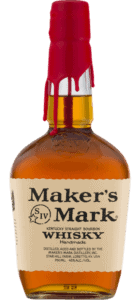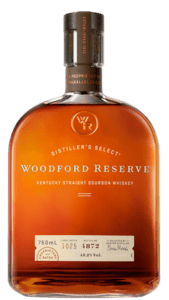In this American whiskey showdown, we’ll take a look at two prominent Bourbon whiskey brands that are premium-category fan favorites of bourbon aficionados everywhere.
While each of these bottles offers a great representation of their price range, what might be most appealing is the opportunity to further your whiskey education by giving them a try. In this matchup, we look at two products that offer unique takes on the fermentation and distillation processes.
So grab a glass — you just might learn something!
Table of Contents
History
The story of these two brands revolves around the revival of two historic distilleries.
In 1812 Elijah Pepper built a grist mill and distillery in Versailles, Kentucky, which became known as the Old Oscar Pepper Distillery. About 60 miles southwest, the Burks Distillery was built by George R. Burks in Loretto in 1889.
Both sites have long and fascinating histories that we won’t visit in detail for this post. Instead, we’ll fast-forward to after post-Prohibition and the middle of the 20th century, when the country is once again expanding whisky production.
In 1953, T. William ‘Bill’ Samuels purchased the Burks distillery for $35,000. He differentiated the Maker’s Mark bourbon brand he distilled on-site by offering a unique square bottle and red wax seal — contributions from his wife, Margie, a natural marketing maverick. When Bill retired, his son Bill Samuels, Jr., took over distilling duties until he retired in 2011. Today, all three are honored in the Kentucky Bourbon Hall of fame. Bill’s grandson Rob Samuels is currently part of the brand’s leadership.
In 1994, the Brown-Forman Corporation purchased the Old Oscar Pepper Distillery, which had fallen into disrepair after World War II. They restored the facility and its three industrial-sized copper pot stills — a rarity in post-Prohibition bourbon country. The updated site was renamed the Woodford Reserve Distillery and its namesake Woodford Reserve Bourbon was released two years later.
Mashbills
The mash bill — aka list of grain ingredients or mash recipe — describes the grain recipe whiskey makers use during fermentation. In this matchup, we highlight the use of soft, red winter wheat used in the production of Maker’s Mark.
By law, all bourbons must contain at least 51 percent corn in the mash bill. The rest of the grains are called secondary grains. Nearly all whiskeys contain a portion of malted barley, both because of the enzymatic action they contribute to the saccharification process and out of a sense of tradition. The remaining grains are called flavoring grains.
Most bourbons — including Woodford Reserve — use rye as the main flavoring grain. But Maker’s Mark is considered a ‘wheated’ bourbon because it uses wheat as the flavoring grain.
The mash bill of Maker’s Mark contains 70 percent corn, 16 percent wheat and 14 percent malted barley.
Woodford Reserve’s mash bill contains 72 percent corn, 18 percent rye and 10 percent malted barley.
The use of corn makes for a sweeter bourbon, while wheat adds a soft and mellow mouthfeel and results in a smooth flavor. The use of rye adds a spiciness to the distillate, while malted barley adds a nutty characteristic.
Another interesting note on the fermentation process at Maker’s Mark is their use of a proprietary yeast strain that Bill Samuels, Sr., inherited along with the distillery.
Distillation & Production
Here, we’ll focus on the three large copper pot stills at the Woodford Reserve Distillery. This Equipment might feel more at home in the Scottish Highlands than in bourbon country. In fact, they were made in Scotland. Master Distiller Chris Morris and his production team craft bourbon the old-fashioned pre-Prohibition way on these copper beauties.
There is a 2,500-gallon beer still and two 1,650-gallon spirit stills. Terminal beer is pumped into the beer still first, which creates low wines at about 60-proof. These are distilled a second time in one of the spirit stills to create high wines. A third distillation is conducted to produce new make whiskey close to the 160-proof maximum for bourbon production.
It should be said that not all of the bourbon that goes into the Woodford Reserve Distiller’s Edition — the most well-distributed bottling of their whiskey — is triple copper-pot distilled. Portions of the copper pot whiskey are combined with column-distilled whiskey from the Brown-Forman Distillery in Shively, Kentucky.
Maturation
Both brands are bourbons, and by law, bourbon must be matured in an American charred oak barrel.
Each is labeled as a Kentucky Straight Bourbon Whiskey. Straight bourbons must be aged for a minimum of two years in new charred oak, and nearly all are aged for four years.
However, neither of these brands has an age statement. Instead, each master blender picks the barrels to blend into each batch by taste.
Brown-Forman owns its own cooperage, where it produces barrels for Woodford Reserve, Jack Daniel’s and its other brands. The Brown-Forman Cooperage gives the blending team at Woodford Reserve an incredible amount of control over the aging process. Things like barrel char levels, bung placement, stave width and density along with other factors can be experimented with to produce new flavors in the finished whiskey.
Ownership & Line Extensions
These two brands are owned by longstanding powerhouses in the world of Kentucky bourbon.
Beam Suntory has a lineage that dates to 1795 when the Beam family began distilling in Kentucky. Beam Suntory is the third-largest producer of distilled spirits in the world. It was formed when the Japan-based Suntory acquired Beam Inc., based in Chicago. The Maker’s Mark brand was purchased from the Samuels family in 1981, but the family continues to play a significant role.
The Brown-Forman Corporation began in 1870, when Garvin Brown began bottling regional whiskeys in Louisville, Kentucky. Today, Brown-Forman is most known for a Tennessee Brand — Jack Daniel’s — but it produces several Kentucky bourbon brands, including Old Forester. The Woodford Reserve brand was created by Brown-Forman to celebrate the reopening of the Old Oscar Pepper Distillery in Woodford County, which was renamed the Woodford Reserve Distillery.
Price Point & Value
The suggested retail price of Maker’s Mark is about $30 for a 750mL bottle and is bottled at 90-proof, or 45 percent alcohol by volume.
The suggested retail price of Woodford Reserve is about $39 for a 750mL bottle at 90.4 proof, or 45.2 percent ABV.
Tasting Notes
Maker’s Mark Bourbon Whisky
Description: In the glass, Maker’s Mark has an amber-honey complexion. Its 90-proof strength is evident by the ‘legs’ that run down the glass after the liquid is swirled around a snifter.
Nose: New oak and cherry aromas, with honey, soft wheat and malted cereal notes.
Tongue: Sweet honey, vanilla, maple syrup and almond flavors.
Finish: Lingering maraschino cherry, chocolate, clove and baking spices.
[Related: Complete Maker’s Mark Bourbon Review]
Woodford Reserve Distiller’s Select Bourbon
Description: In the glass, Woodford Reserve has the deep gold color of burnished copper. It has healthy legs at 90.4-proof.
Nose: New oak aromas of caramel and vanilla, with notes of almonds, toffee and dark chocolate.
Palate: Corn sweetness and a buttery mouthfeel, with flavors of almonds, walnuts, chocolate, cinnamon, vanilla and raisins.
Finish: Chocolate and vanilla, with lingering notes of leather and tobacco and a hint of smoke.
[Related: Complete Woodford Reserve Review]
Verdict…
Buffalo Trace. Knob Creek. Jim Beam. Wild Turkey.
There are some brands that anyone who wants to call themselves a bourbon drinker simply must try. But once you’ve gotten through the standard expressions, it’s time to graduate to these two premium brands.
At about $9 more per bottle at a similar proof-point, Woodford Reserve is definitely a bit more dear in price. But added value comes along with the triple distillation in copper pot stills, a tradition more common with Irish or Scotch whisky production.
And while Maker’s Mark is a more affordable price, it certainly offers a lot of return on investment for the whiskey fanatic as well. As an introduction to wheated bourbon, it makes for an educational pour as well.

